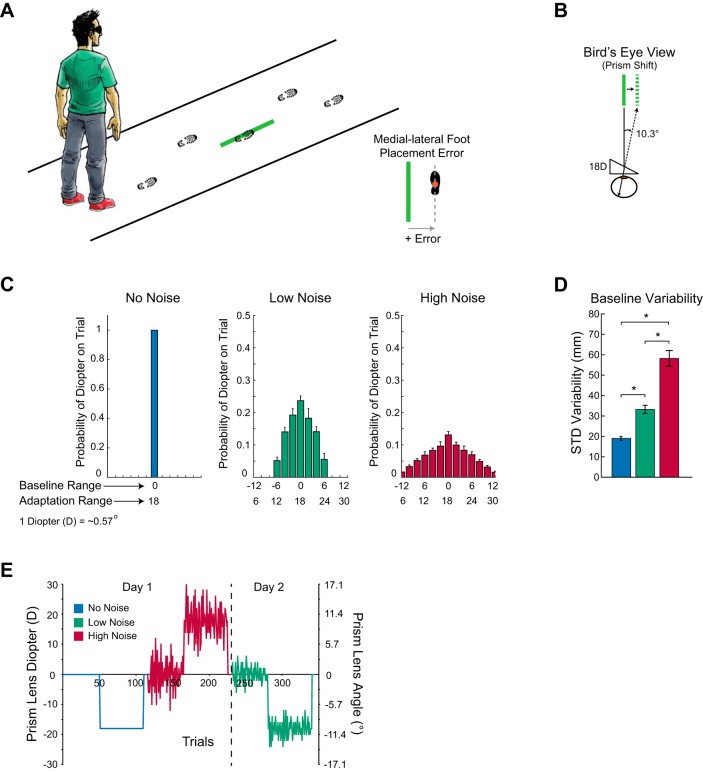Fig. 1.
Experimental setup and design. A: schematic of the visually guided walking task. Subjects walked and stepped with their right foot on a thin green line projected on the ground from above. Medial-lateral foot placement error, defined as the distance between a position marker on the foot and the center of the target line, quantified performance (inset). B: a simulated view of the target through the prism lenses and the perceived target shift for 18-diopter lenses. C: distribution of prism lenses in each noise condition for the baseline and adaptation phases. D: increasing noise created greater foot placement error variability during the baseline phase, supporting the notion that our prism noise had the intended effect on performance. *P < 0.05, significant post hoc test effects. E: an example of one of the protocols. In this case, the subject first experienced the no-noise condition with a leftward prism shift in the adaptation phase, followed by the high-noise condition with a rightward prism shift in the adaptation phase, and then the low-noise condition with a leftward prism shift in the adaptation phase. In each condition, 50 baseline phase trials preceded 60 adaptation phase trials and 5 postadaptation phase trials.

